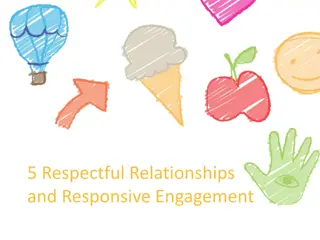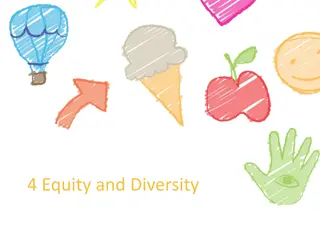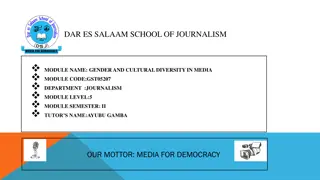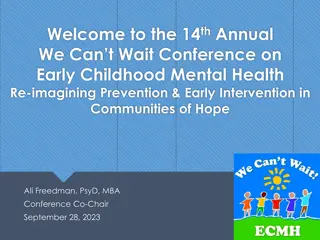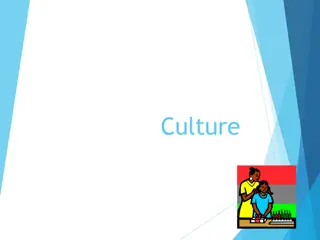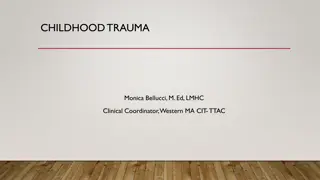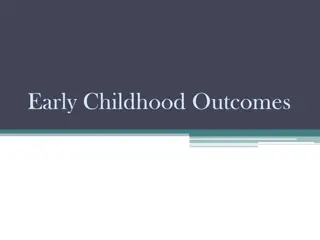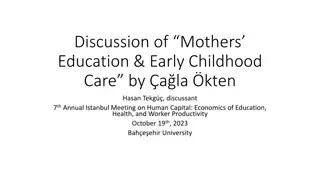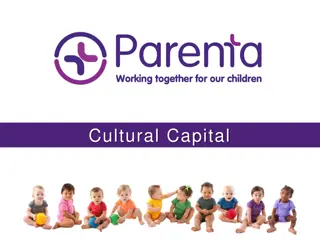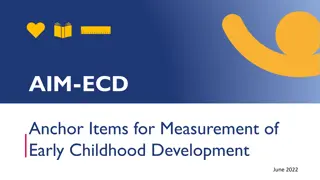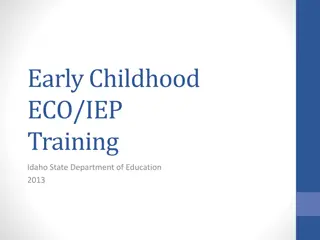Exploring Cultural Diversity and Community Engagement in Early Childhood Education
In this project, Sarah Ye shares her experiences and insights from working at Children's Village in Philadelphia. Through her involvement in the preschool classroom routine, she emphasizes the importance of teacher-family interaction and incorporating home culture into the educational setting. The Children's Village, a non-profit organization serving young children from diverse backgrounds, offers a nurturing environment with bilingual staff and programs that cater to the needs of the community. With a focus on community resources, this initiative showcases the value of inclusive education practices and cultural awareness in early childhood development.
- Cultural diversity
- Community engagement
- Early childhood education
- Teacher-family interaction
- Bilingual education
Download Presentation

Please find below an Image/Link to download the presentation.
The content on the website is provided AS IS for your information and personal use only. It may not be sold, licensed, or shared on other websites without obtaining consent from the author. Download presentation by click this link. If you encounter any issues during the download, it is possible that the publisher has removed the file from their server.
E N D
Presentation Transcript
CFS SENIOR PRAXIS POSTER SESSION Sarah Ye 2020.5.13
Introduction Major: Psychology Minors: Child and Family Studies, Education Courses taken for CFS: Critical Issues in Education, Study of Gender in Society, Intro to Cultural Anthropology, Anthropology of Food, Critical Issues in Urban Education, Culture and Development Placements (for praxis courses): Overbrook High School, Gotwals Elementary School, Children s Village Preschool, Vaux Big Picture High School
CHILDRENS VILLAGE PHILADELPHIA 125 North 8thStreet Philadelphia, PA 19106
Childrens Village A non-profit organization that serves young and school-age children (up to 13 y/o) Day care for toddlers and preschoolers Afterschool programs and summer camps for school-age children Opens Monday to Friday, 6:30AM - 6:00PM Diverse community Different racial, ethnic, and cultural backgrounds Serves many families who speak one or more of the many Chinese dialects Located next to Chinatown Many bilingual (English, Chinese) staff Posters/brochures/announcements in both languages
Preschool Classroom (morning) Routine My Role Children arrive/morning check- ins/free play Circle Time (songs, calendar, names, book reading, simple math) Play time Outdoor time (at the nearby park, playground on the deck, or multipurpose/dance room) Lunch Nap Hanging out with the kids during play time Assisting drawing/craft making Mediating conflicts Working one-on-one with children Translating and giving instructions to children who only speaks Chinese Assisting the teachers with classroom management when the class moves location as a big group
Memorable Moments Teacher-family interaction Teachers check in with students families when they are dropped off or picked up and are aware of students family composition and big events going on at their homes. When both parents and teachers are present in the classroom, parents encourage their children to keep following school rules, even when some of those rules don t necessarily apply at home (e.g. cleaning up after themselves after meals). Home culture is welcome in the classroom. Each child has a picture of their family posted on the wall and the description are written in both English and their home languages. School as community resource center School provides brochures on information that would benefit new immigrant families (i.e. instructions of voting, seminars that help parents better navigate the public education system, knowledge on child development, etc.) All texts (posters/signs/announcements) are written in both English and Chinese so all the parents/grandparents have access to the information.
Takeaways Children s Village demonstrates a great model of community building and serves as a helpful resource not only for the children but also for the families and local community. It is inspiring to see under-privileged groups being supported by an educational institution, instead of being hindered in educational settings because of some of their identities. Having school as an institution that s able to reach out to more community members and effectively distribute useful resources to the community lessens the divide between home and school. Taking the larger community and students cultural backgrounds into account makes learning a more engaging experience for the children. At the same time, families and community members benefit from the school s resources. With this bond between school and community, more community assets are likely to be utilized, thus further perpetuates this positive cycle of resources. It is impossible to separate a child s growth and learning from their family background. Recognizing and appreciating heritage cultures and languages of immigrant children is crucial as they learn to navigate the world.






